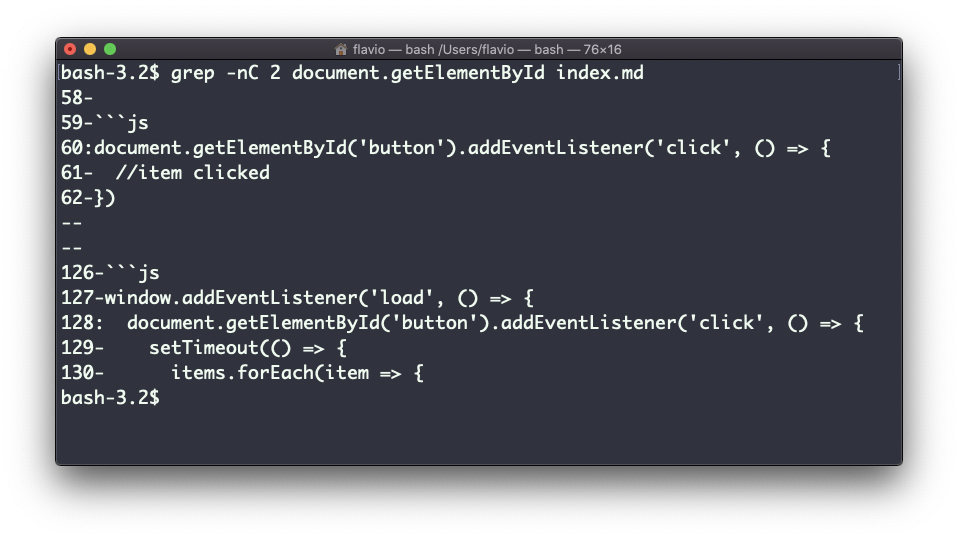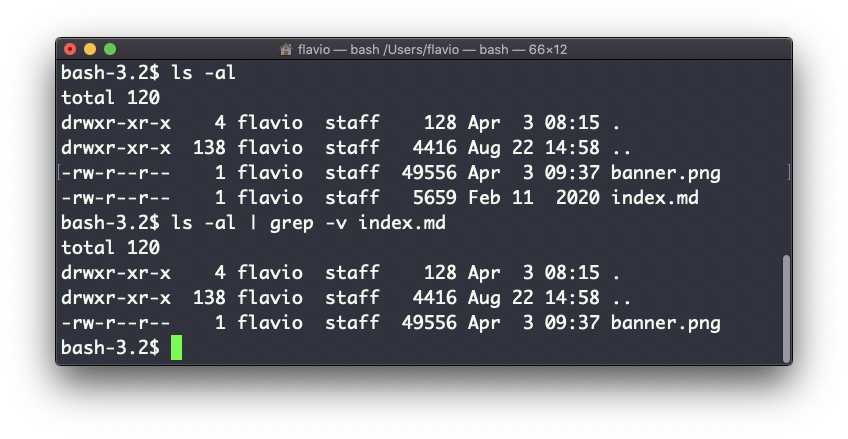Linux commands: grep
A quick guide to the `grep` command, used to match patterns in text
The grep command is a very useful tool, that when you master will help you tremendously in your day to day.
If you’re wondering,
grepstands for global regular expression print
You can use grep to search in files, or combine it with pipes to filter the output of another command.
For example here’s how we can find the occurences of the document.getElementById line in the index.md file:
grep -n document.getElementById index.md

Using the -n option it will show the line numbers:
grep -n document.getElementById index.md

One very useful thing is to tell grep to print 2 lines before, and 2 lines after the matched line, to give us more context. That’s done using the -C option, which accepts a number of lines:
grep -nC 2 document.getElementById index.md

Search is case sensitive by default. Use the -i flag to make it insensitive.
As mentioned, you can use grep to filter the output of another command. We can replicate the same functionality as above using:
less index.md | grep -n document.getElementById

The search string can be a regular expression, and this makes grep very powerful.
Another thing you might find very useful is to invert the result, excluding the lines that match a particular string, using the -v option:

The
grepcommand works on Linux, macOS, WSL, and anywhere you have a UNIX environment
→ I wrote 17 books to help you become a better developer:
- C Handbook
- Command Line Handbook
- CSS Handbook
- Express Handbook
- Git Cheat Sheet
- Go Handbook
- HTML Handbook
- JS Handbook
- Laravel Handbook
- Next.js Handbook
- Node.js Handbook
- PHP Handbook
- Python Handbook
- React Handbook
- SQL Handbook
- Svelte Handbook
- Swift Handbook
Also, JOIN MY CODING BOOTCAMP, an amazing cohort course that will be a huge step up in your coding career - covering React, Next.js - next edition February 2025